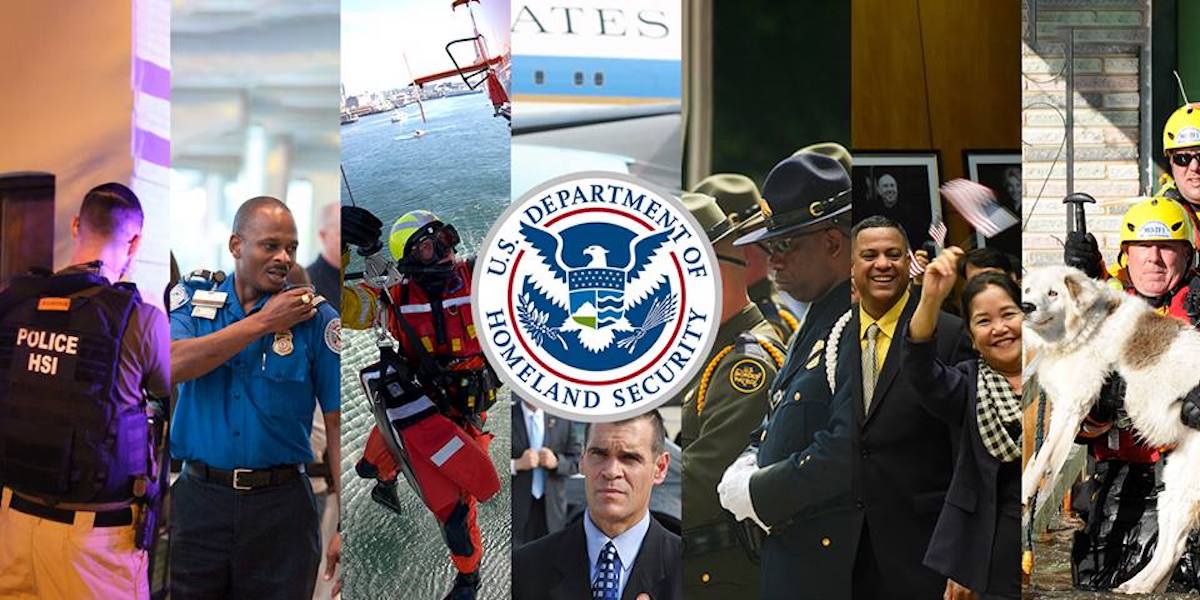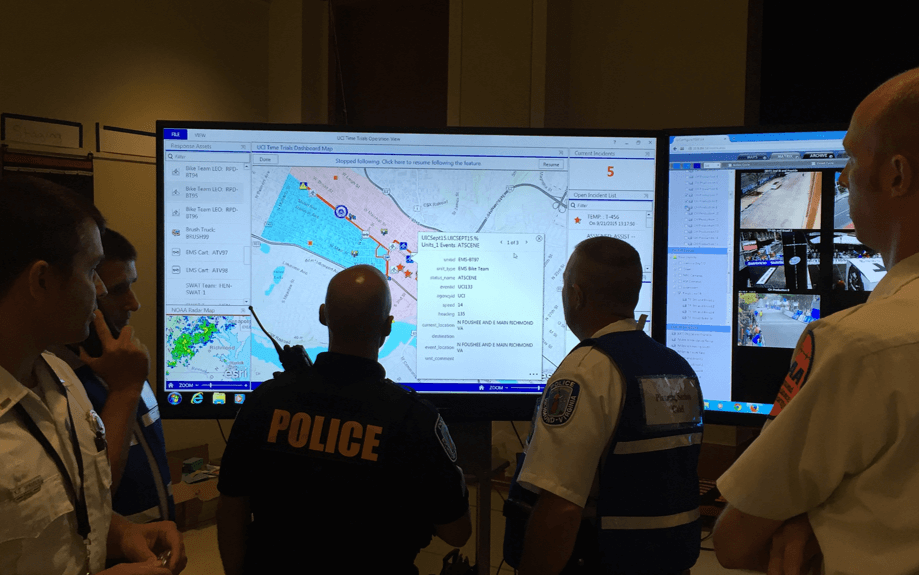The State of Preparedness
In June 2003, the International Association of Chiefs of Police announced the results of their Homeland Security Preparedness Survey. The survey, sponsored by ITT Industries, was sent to more than 17,000 state and local law enforcement agencies[i]. The results of the survey were not surprising; nine out of ten law enforcement agencies did not feel they were adequately prepared to prevent or respond to a terrorist event. Moreover, police officers across the nation identified among the keys issues were interagency communication, specialized equipment and the lack of sufficient training.
It is not just police officers who feel unprepared. In a 2004, the U.S. Conference of Mayors released a report that said 44% of the cities surveyed had responded to a multi-agency incident within the last twelve months wherein a lack of interagency communication made operations difficult and, 88% reported they lacked interoperability with federal Homeland Security agencies[ii].
Although it is clear that emergency personnel are lacking in our preparedness, not all of the information is negative. For instance, a recent a survey of city and county managers revealed that spending on communications, equipment and training is increasing; however, in order to increase our ability to prevent and/or respond to terrorist incidents we must begin to conduct a systematic analysis of the threat[iii]. In other words, our current state of preparedness will not increase until we have a way to analyze the threats, targets and our needs. A technique that can facilitate our journey to preparedness is Needs Assessment.
Needs Assessment
Needs Assessment is a type of action research that looks at the difference between what is and what should be. Although a Needs Assessment is a formal, systematic way of discovering our weaknesses and planning for the future, it is something we do informally throughout the day. Making a list for the grocery store is a simple Needs Assessment. What is in the panty and what you want to cook give you an idea of what you need from the store. However, an understanding of how to conduct a formal Needs Assessment can be critical for the emergency planner, especially one that intends to seek grant monies to fulfill unmet needs.
In the arena of preparedness, a Needs Assessment begins with an analysis of what could happen. What are the potential terrorist targets in your jurisdiction? This is a creative process that calls for us to imagine what terrorists could do. However, a distinction might be made between the fantastical imagination and the practical imagination. Over the years, terrorists have shown themselves to be disturbingly practical and resourceful, putting mundane tools like traditional explosives and airplanes to terrible use[iv]. As an example, is it more practical to plan for terrorists detonating a nuclear device in a small town or to plan for terrorist using conventional explosives on a tanker truck containing poisonous gas? Both are possible, but which is more likely?
Outcome and Probabilities
Through this process we begin to identify potential terrorist targets. Once potential targets are identified the planner should then begin to assess the current state of the target and the jurisdictions current ability to strengthen or protect the target. An analysis of current ability leads to an analysis of what is lacking.
Typically, once targets are examined and analyzed they are then ranked according to their level of risk[v]. By risk we mean a combination of the probability that an event will happen combined with the potential outcome. One method of ranking risk is through the use of a 2X2 matrix.
| High | |||
| Outcome | Moderate Risk | High Risk | |
| Low Risk | Moderate Risk | ||
| Low | Probability | High | |
This matrix may give us a helpful way to rank and prioritize our resources and planning. Consider that a potential incident with a high outcome and high probability of occurrence would be ranked over a potential incident with low outcome and low probability. Take a moment and classify the detonation of a nuclear device in a small town. It would be a high outcome, yet low probability event and therefore a moderate risk. The chemical tanker explosion might be considered both high outcome and high probability, making it a high risk. Once ranked, the locations are evaluated as to their current state and then their needs to bring them to a full state of preparedness[vi].
All-Hazards Model
The All-Hazards Model of emergency preparedness was developed by the National Governors Association during the 1970s[vii]. Essentially, All-Hazards is a planning model which considers mitigation, preparedness, response and recovery as a total planning package. As first responders and emergency planners, if we view planning for terrorism as All-Hazards planning we stand to reap greater benefits. This requires that we view “counterterrorism as part of general emergency preparedness and response. By doing so emergency planners and first responders can use their resources to prepare for the remote possibility of a terrorist attack and prepare for the more likely disasters such as tornados, fires, floods and earthquakes[viii]. For example, your response to a hazardous material spill, whether intentional or accidental, is going to be remarkably similar. There is a distinct difference between traditional All-Hazards planning and the incorporation of terrorism into emergency planning. While response is similar to an accidental chemical spill and an intentionally explored chemical truck, prevention can be significantly different.
At certain points planning for terrorism may be somewhat different from general emergency planning because we are thinking in terms of preventing terrorism by making it more difficult to complete an attack and by disrupting terrorist activities through law enforcement. Even so, as you begin to examine the needs for each location it is very likely that combining our counterterrorism efforts with general emergency planning with give us greater insights. Moreover, this comprehensive approach to Needs Assessment and emergency planning works well with the Federal Emergency Management Agencys (FEMA) Integrated Emergency Management System[ix].
Ranking Needs
Once the locations have been rank and analyzed the preparation of a second matrix may help in establishing agency need priorities. In the table below, the locations are listed vertically while all of the different needs are listed horizontally. Note that not all of the locations need the same resources for improved preparedness. Yet, patterns emerge. In a time of scarce resources this type of matrix can assist in making decisions about funding and acquisitions. Essentially, getting the most protection for our efforts.
| Location | Interoperability | Access Control | Surveillance Cameras | HazMat Suits | Metal Detector |
| Ajax Chemicals | X | X | X | ||
| Grade School | X | X | X | ||
| Power Station | X | ||||
| Freight Yard | X | X |
In the matrix above, it is clear that improvements in interoperability will impact all four locations. It is also clear that obtaining hazardous material protection gear will have an impact on preparedness at two locations the chemical plant and the freight yard. With this type of Needs Assessment emergency planners can not only make good decisions on community preparedness, but they have significant information to provide funding authorities. This type of Needs Assessment Model works equally well when looking at family, individual and community needs.
Start at Home
There is growing concern about the consequences of military deployment on families. This is especially true for the children of military personnel. Similarly, your family copes with anxiety created by your profession. It is likely that each time you leave the house your family feels anxious because of what they have heard in the media, from friends, neighbors and even extended family about police work. Terrorist incidents may heighten your familys concern for you safety. And, of course, this is a two-way street.
Educating your family will make them feel more comfortable and knowing your family is safe will make you a better first responder. Actions at home begin with recognizing your family knows something about terrorism and have made vague connections on how it may affect you, and them. Quite frankly, if you dont provide them with information someone else will; and, your familys imagination will fill in the rest. Consider a conversation with your eleven year old. He or she tells you about what they learned in school concerning the tsunami in the Indian Ocean. Is your child telling you about the tsunami or are they opening the door on your familys safety? Often times, when people express concerns about disasters they are really thinking about what could happen to them. You must reassure your family, be available and provide them with information they can understand.
Consider using the All-Hazards model for family education. By placing terrorism alongside other potentially life-threatening hazards you can both educate and reassure. Moreover, All-Hazards planning is empowerment. It provides action steps which give people a sense of control over events. It is also critically important to take action with your family. Of course, actions speak louder than words. But, there is also something inherently powerful in doing and leading by doing.
A starting point could be FEMAs website. There you can learn what to tell you children, how to shelter-in-place, develop personalized emergency plans and find a multitude of information on all types of disasters and emergencies. The critical points are to talk with your family, provide them with a sense of control and help them prepare.
Your Survival
If you become a casualty through injury or contamination your response is more than ineffective, it adds to the problem. As with the response to any tactical problem, the more information you have the better your response. Returning to the All-Hazards model a terrorist incident generally consists of a combination of the indicators. These indications are crime and mass casualty. A primary difference between a crime scene and a terrorist incident is response. Simply put, police officers should consider delaying entry into the zone of a terrorist incident until personnel with specialized equipment arrive. With mass casualty events this may be personally difficult. However, the nature of chemical, biological and radiological weapons (or, perhaps secondary devices) makes delayed entry a critical safety factor.
The only way that you can learn about the indicators of a terrorist incident is through training. Indeed, training is the first stop on your journey to terrorist preparedness. One of the over-riding themes of all of the surveys on preparedness is the lack of training for first responders, particularly law enforcement personnel. Although your agency may not be able to provide you with training, you must seek it out. At a minimum, all law enforcement personnel should take the FEMA Independent Study programs: Basic Incident Command System; Disaster Basics; National Incident Management System; and, Emergency Response to Terrorism. You should seek out information (again, much of which is available at the FEMA and READY.GOV) on sheltering-in-place, response to chemical, biological or radiological events and, general disaster response.
Your next step at personal survival should be the inclusion of terrorism/disaster related tools and resources in your equipment bag. By using the Needs Assessment format you can develop a list of items to promote survival and comfort. Equipment needs can be universal blood borne pathogen protection, water, maps, etc. At a minimum you should obtain a copy of the Department of Transportations (DOT) Emergency Response Guide book (ERG2004). This guide is freely available from the DOT and a copy is available for download at their website.
Finally, train! In any emergency you will default to the level of your training. Often times, the best training takes place outside the classroom and in-between radio calls. Take some time and meet with your partners. Conduct table top exercises over coffee. Conduct what if drills in the field practice your response, command post protocols and other skills.
Your Beat
Even if your agency does not undertake an official Needs Assessment you can conduct one for your beat. Every cop knows that to really dig out the crime on your beat you must first learn what is normal. Knowing your beats normal patterns causes you to spot the unusual the person that doesnt belong; the car that shouldnt be there; or, the business that should be closed. As you work your beat, take special note of strategic locations and potential targets.
Now is the time to look at these locations. Suppose you have a chemical processing plant on your beat. As we examined in the first part of this article, you begin Needs Assessment by examining the threats – What chemicals are found in the plant? How do the chemicals affect your response? In what ways is the location vulnerable? Once potential targets have been identified you can begin to fill-in-the-blanks on your response. For instance, where is the nearest command post location that is typically uphill and upwind of the location?
As you gather information about potential targets on your beat you can share your findings with the other shifts, and the people responsible for those locations. Sharing information about response and preparedness with community members and business owners promotes preparedness. As you explore the potential targets on your beat, you will probably find that some locations already have plans and are willing to include you. Your survival as a first responder depends on your skills, knowledge and equipment. Combing your family planning, personal survival skills and a Needs Assessment of your personal beat is a powerful method of increasing preparedness; and, perhaps moving your agency toward readiness.
Your Organization
Personally taking a proactive stance toward terrorism response and planning for your family, your personal survival and your beat moves your entire agency a little bit in the right direction. As your skills and expertise in preparedness increase you may have the opportunity to participate in agency planning. Indeed, expertise often begets opportunity. The more you train and plan personally, the more valuable you become to your agency.
If you find you self involved in agency-wide planning it is critical to remember the All-Hazards model of planning and response is meant to engender cooperation from all government, non-government, business and community members. The idea is to take the strengths and talents of all stakeholders and combine to make ourselves safer against the terrorist. Although law enforcement might take a lead role, this is one instance where the idea of partnerships is critical.
In addition cooperating with the stakeholders in your jurisdiction, planning must take into consideration your neighbors. Consider how difficult it is to communicate with the street maintenance department in your own jurisdiction. The level of difficulty substantially increases when multiple agencies from multiple jurisdictions work the same problem. What if the street maintenance department in an adjacent jurisdiction has a piece of heavy equipment you need? How difficult will it be to communicate that need across jurisdictional lines? In the next article we will be looking closely at the National Incident Management System (NIMS) and the National Response Plan (NRP). Both are means to foster interagency and inter-jurisdictional cooperation.









